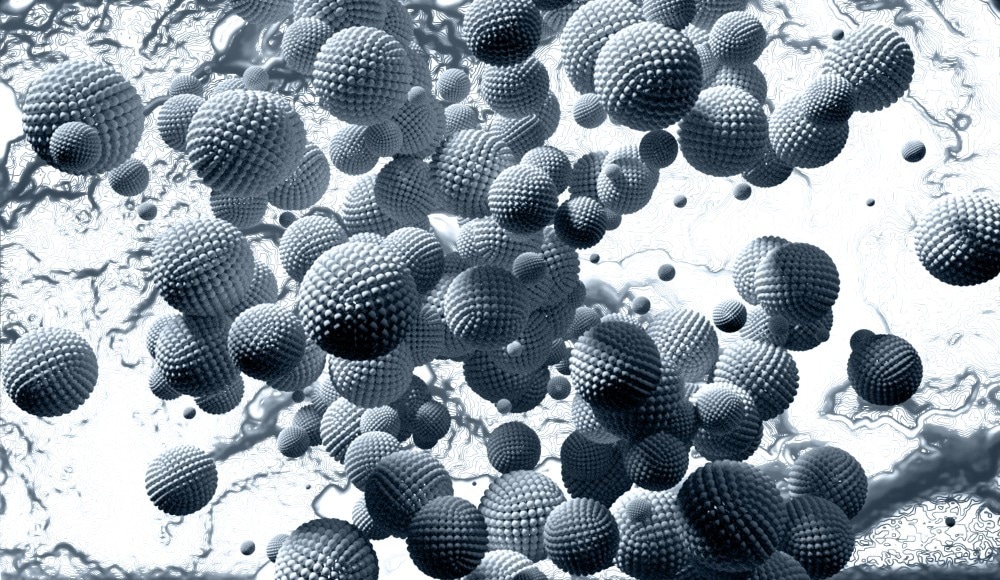A recent article in the journal International Journal of Thermofluids explored ways to improve heat and mass transfer in electronic cooling systems using hybrid nanocoolants.

Image Credit: GiroScience/Shutterstock.com
The researchers focused on predicting thermo-solutal transport rates from multiple heated chips within an enclosure filled with hybrid nanocoolants. To achieve this, they developed an artificial neural network (ANN) model to optimize thermal management. This study highlights the potential of integrating hybrid nanocoolants with machine learning models to improve thermal management systems across various applications.
Background
Thermo-solutal natural convection (TSNC), or double-diffusive natural convection (DDNC), is a phenomenon driven by thermal and solutal gradients that significantly impact fluid flow and heat transfer rates. This process is crucial in thermal energy storage, solar thermal systems, heating, ventilation and air conditioning (HVAC), and advanced cooling technologies.
Traditional cooling fluids, like ethylene glycol, water, and air, often suffer from limited thermal conductivity, hindering performance. However, nanofluids, suspensions of nanoparticles in a base fluid, have been shown to improve thermal conductivity. Hybrid nanofluids, which contain multiple types of nanoparticles, offer even greater thermal properties than standard nanofluids.
About the Research
This paper investigates natural convection within a rectangular enclosure containing three equidistant heated chips along the bottom wall. The enclosure is filled with ethylene glycol-based hybrid nanocoolants featuring varying volume fractions of Multi-walled Carbon Nanotubes (MWCNT), Aluminum Oxide (Al₂O₃), and Copper Oxide (CuO). The study employed the Galerkin weighted residual finite element method (FEM) to simulate the thermo-solutal natural convection inside the enclosure.
To capture the dynamics of heat and mass transfer, the authors generated a robust dataset using FEM simulations while varying critical parameters, including Rayleigh number (Ra), buoyancy ratio (N), and Lewis number (Le). They aimed to enhance heat and mass transfer rates by optimizing the hybrid nanocoolant composition and applying machine learning models for accurate predictions.
The researchers developed an ANN model with a 6-50-100-50-2 architecture, trained on simulation data from both mono and hybrid nanocoolants. They utilized Python's Keras and Scikit-Learn libraries, employing the Adam optimizer and the Rectified Linear Unit (ReLU) activation function to enhance model performance. The dataset was divided into training and validation sets to assess the model's robustness. The training process included techniques such as dropout to prevent overfitting and ensure generalization.
For comparison, the ANN model was tested using a specific hybrid nanocoolant composition and evaluated against other models, including K-Nearest Neighbors (KNN), Random Forest Regressor, and Decision Tree Regressor. Performance metrics included Mean Squared Error (MSE), Mean Absolute Error (MAE), Root Mean Squared Error (RMSE), and the coefficient of determination (R²).
Findings and Insights
The outcomes showed that the hybrid nanocoolant containing 1.5% MWCNT, 0.5% CuO, and 2% Al₂O₃ improved the heat transfer rate by 3.11% compared to the base fluid. The ANN model achieved high accuracy in predicting heat and mass transfer rates, with an R² value of 99.96% and an MSE of 0.8923 on testing data. Its predictions exhibited an error margin of 1-2% for heat transfer rates and 2-3% for mass transfer rates, even under strong thermal buoyancy forces (Ra = 10⁵).
As buoyancy forces increased (higher Ra values), both heat and mass transfer rates improved. The authors observed that total average Nusselt (Nuavg) and Sherwood numbers (Shavg) increased with stronger buoyancy ratios, indicating a clear link between buoyancy strength and thermal performance. They found that hybrid nanofluids, particularly HNC03, outperformed standard nanofluids, achieving up to a 3.11% increase in heat transfer rates under specific conditions. The study emphasized the importance of balancing thermal and solutal buoyancy forces to optimize thermal performance within the enclosure.
The terminal heated chip demonstrated the highest thermo-fluidic transfer rates. The model’s efficient predictions provide an alternative to resource-intensive simulations. By integrating high-fidelity FEM simulations with the predictive capabilities of ANN, this approach enables rapid and accurate forecasting of thermal and solutal transfer rates in complex systems.
Key Applications
This research has significant implications for thermal management in fields like microelectronics, renewable energy, and others involving nanofluids and heated chipsets in confined spaces. Hybrid nanocoolants can enhance cooling system performance, improving heat management in electronic devices and thermal systems.
Integrating machine learning models, particularly ANN, offers a cost-effective, real-time approach to predicting and optimizing thermal and solutal transport behaviors. Accurate predictions of heat and mass transfer rates could allow engineers to design systems that maximize performance while minimizing energy consumption.
Conclusion and Future Directions
In summary, combining nanotechnology with machine learning proved effective for advancing research in thermal management systems. The introduced ANN model offers a novel and efficient method for predicting heat and mass transfer rates, providing a faster and more accurate alternative to traditional simulations. This robust tool paves the way for advanced cooling solutions across various applications.
Future work could explore other nanoparticles, such as graphene or titanium dioxide, and refine the ANN model by integrating genetic algorithms and ensemble methods to enhance optimization. Additionally, investigating varying temperature gradients and flow conditions could provide insights into hybrid nanofluid behavior in practical applications.
Disclaimer: The views expressed here are those of the author expressed in their private capacity and do not necessarily represent the views of AZoM.com Limited T/A AZoNetwork the owner and operator of this website. This disclaimer forms part of the Terms and conditions of use of this website.
Source:
Mahmud, T., & et al. Artificial neural network (ANN) approach in predicting the thermo-solutal transport rate from multiple heated chips within an enclosure filled with hybrid nanocoolant. International Journal of Thermofluids, 2024, 24, 100923. DOI: 10.1016/j.ijft.2024.100923, https://www.sciencedirect.com/science/article/pii/S266620272400363X